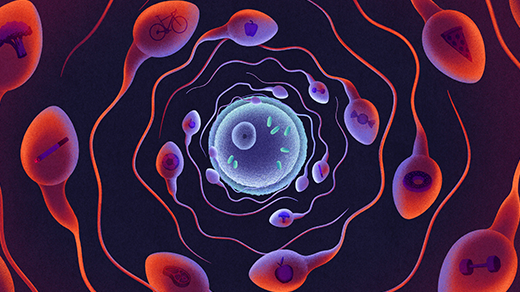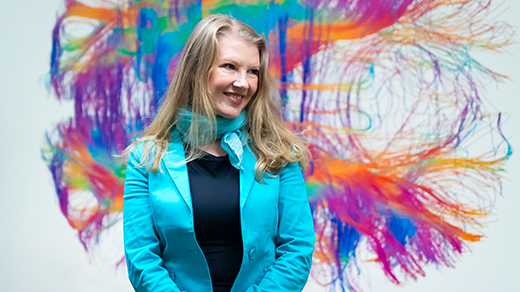What Does It Mean To Be Thirsty?
Introduction
Water is the most fundamental need for all life on Earth. Not every organism needs oxygen, and many make their own food. But for all creatures, from deep-sea microbes and slime molds to trees and humans, water is nonnegotiable. “The first act of life was the capture of water within a cell membrane,” a pair of neurobiologists wrote in a recent review. Ever since, cells have had to stay wet enough to stay alive.
Water is the medium in which all chemical reactions in an organism take place, and those reactions are finely tuned to a narrow range of ratios between water and salt, another essential ingredient in life’s chemistry. The cells in your body are permeable to water, so if the water-salt balance of the surrounding fluid — blood, lymph or cerebrospinal fluid, for example — is outside its healthy range, cells can swell or shrink, shrivel or potentially burst. An imbalance can cause brain cells to malfunction, losing their ability to manage ion concentrations across their membranes and propagate action potentials.
Although these effects of insufficient water are felt by every cell in the body, cells themselves do not cry out in thirst. Instead, it’s the brain that monitors the body’s water levels and manifests the experience of thirst — a dry tongue, hot throat and rapid onset of malaise — which compels a behavior: acquire water.
“These neural circuits that control hunger and thirst are located deep in primitive brain structures like the hypothalamus and brainstem,” said Zachary Knight, a neuroscientist at the University of California, San Francisco, who recently co-authored a review paper in Neuron on the neurobiology of thirst.
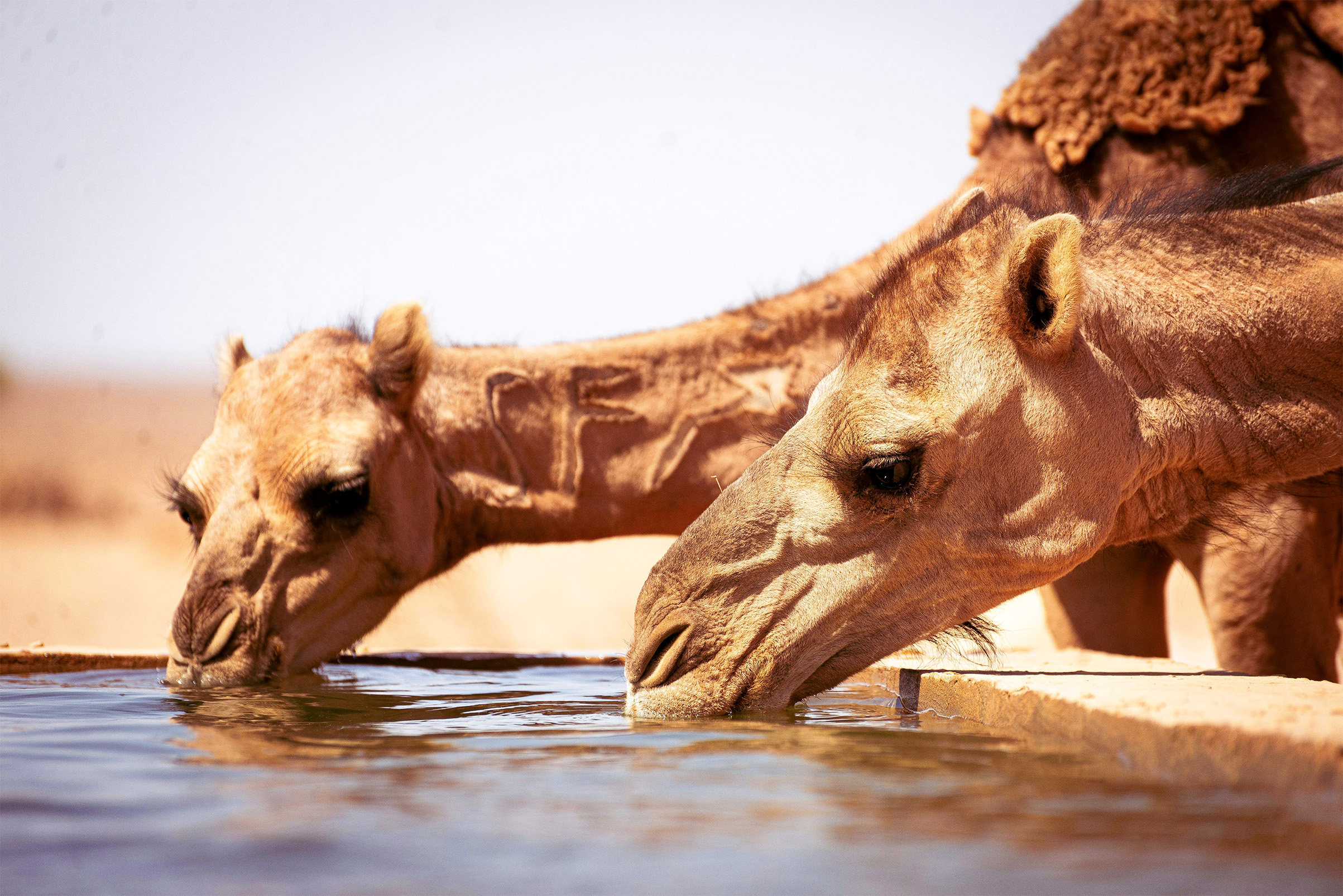
Camels don’t experience thirst the same way we do: They burn fat stores or draw stored gallons from their stomachs when they need water.
Moaz Tobok CC0 Creative Commons license via Pexels
Because these brain areas are difficult to study — due not only to their location, but also to their composition, with many different cell types and crisscrossed circuitry — it’s only in the last decade or so that neuroscientists have begun to understand how thirst fundamentally works. The body, researchers have found, is filled with sensors that feed clues to the brain about how much water or salt an organism needs to consume. How those sensors work, or what they even are, continues to elude scientists. Their existence offers a tantalizing insight: Water may be fundamental to life, but thirst is an educated guess.
Environmental Sensing
To understand thirst in mammals, think of it less as the body stating a fact to the brain — “I need water” — and more as the brain monitoring its environment, the body. Like an ecologist sampling a river, the brain examines blood’s chemical composition to learn what the body needs.
In nearly all cases, the so-called blood-brain barrier protects the brain from bacteria, viruses or other dangers circulating in the blood. But there are a few exceptions where the brain directly interfaces with blood, including in the circumventricular organs, deep in the brain near the hypothalamus.
Two of these organs — the vascular organ of lamina terminalis (OVLT) and the subfornical organ (SFO) — are sensory organs not unlike a nose or an ear. They act like scientists dipping a bucket into the body’s river of blood to test its health. The brain infers the body’s salt and water needs from that data and funnels the information to neural circuits in even deeper regions, which then can trigger what we experience as thirst — the scratchy throat, dry mouth and foggy brain that accompany desire for water.
The blood-testing organs don’t measure water levels but rather the concentration of salt, whose healthy range lies at almost exactly the same concentration as that of the brackish intertidal water in which vertebrates first evolved (which is about one-third as salty as seawater). When the water-salt ratio is too low, we get thirsty. The human body is about 60% water, although that number varies from tissue to tissue (bone is 31%, the brain 73%, the lungs 83%). A change of between 1% and 3% in the blood’s water content, which is normally around 60%, is sufficient for the OVLT and SFO to initiate familiar, unpleasant feelings that motivate a behavior. If salt levels are high, the animal drinks.
But there is a disconnect between drinking water and correcting the water-salt balance. It takes 30 to 60 minutes for water to enter the bloodstream once it’s consumed, and the brain cannot wait that long to figure out if the body has the water it needs. It must make a decision more or less immediately; an animal can’t sit around and do nothing but drink water for half an hour.
So, the brain guesses. More of those mysterious sensors kick in. One roughly estimates the volume of water passing through the mouth and throat and sends an initial signal to the brain. A second signal comes from the gut — from specific cell types that respond to water, and even to the mechanical stretching of the stomach as it takes water in. Within a minute, these signals reach the brain and block the neurons in the OVLT and SFO that were activated to trigger thirst. The thirst response shuts off; the throat cools, and the mouth becomes moist again.
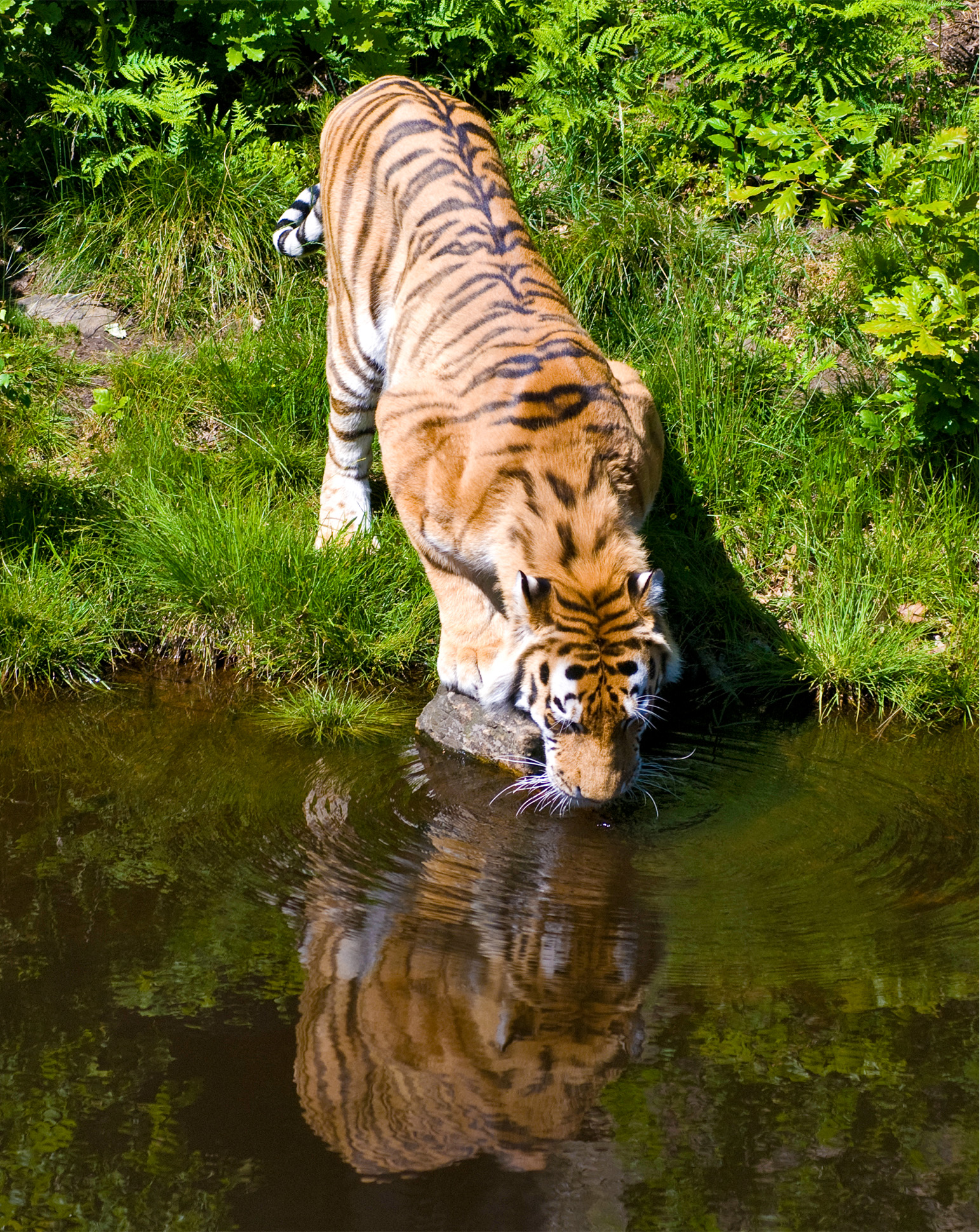
A tiger’s brain triggers the discomforts of thirst to motivate the cat to drink water.
Berrit Watkin, CC BY 2.0 via Wikimedia Commons
Thirst, though, represents only one side of maintaining homeostasis. Salt — more specifically, sodium — is one of the most important things an animal consumes. Animals need sodium for neurons to fire action potentials, for proteins to keep their shape and function, and for chemical reactions to occur inside cells — the everyday business of life. We need to maintain a concentration of sodium ions in the fluids of our bodies to enable all those functions. It’s the other side of thirst.
“There are only a couple of things that are so important for your body that there’s a completely innate drive to get it if you fall into deficiency,” Knight said. “Oxygen, food, water and sodium.”
However, animals like us do not experience salt desire as a powerful, controlling drive as we do with oxygen, food and water. Sensors signal salt levels to the brain; in addition to the OVLT and SFO, sensors in the heart detect the stretching of atria and ventricles. But there is no analogous salt pang when we need it, the way a stomach churns for food or a scratchy throat cries out for water. Instead, the need to consume salt is mediated by taste and the brain’s reward pathways. “The taste of salt is bimodal,” Knight said. “It tastes good at low doses; at high doses it tastes disgusting, like drinking seawater.”
Imagine the urge to eat a big bag of potato chips. If the body needs salt, those chips will cause a surge of pleasurable dopamine to flood the brain. If the body doesn’t need salt, that dopamine drip disappears. “It’s pretty much reinforcement learning,” said Yuki Oka, a neurobiologist at the California Institute of Technology who studies how the body maintains homeostasis. “More dopamine means a repeated behavior.”
Everyone Thirsts Differently
Scientists monitoring a river collect data and then have a choice about whether to act on their findings. Similarly, just because the brain measures the blood’s sodium levels doesn’t mean it has to act on that information.
Take Elena Gracheva’s 13-lined ground squirrels. Gracheva, a neurophysiologist at the Yale School of Medicine, studies these rodents, native to North American grasslands, to understand how specific brain regions control thirst. The 13-lined ground squirrel is an ideal model for this, she said, because it hibernates for more than half the year, without eating or drinking. “They’re like monks,” Gracheva said. “They don’t go outside for eight months. They don’t have water in their underground burrow.” How do they not get thirsty?

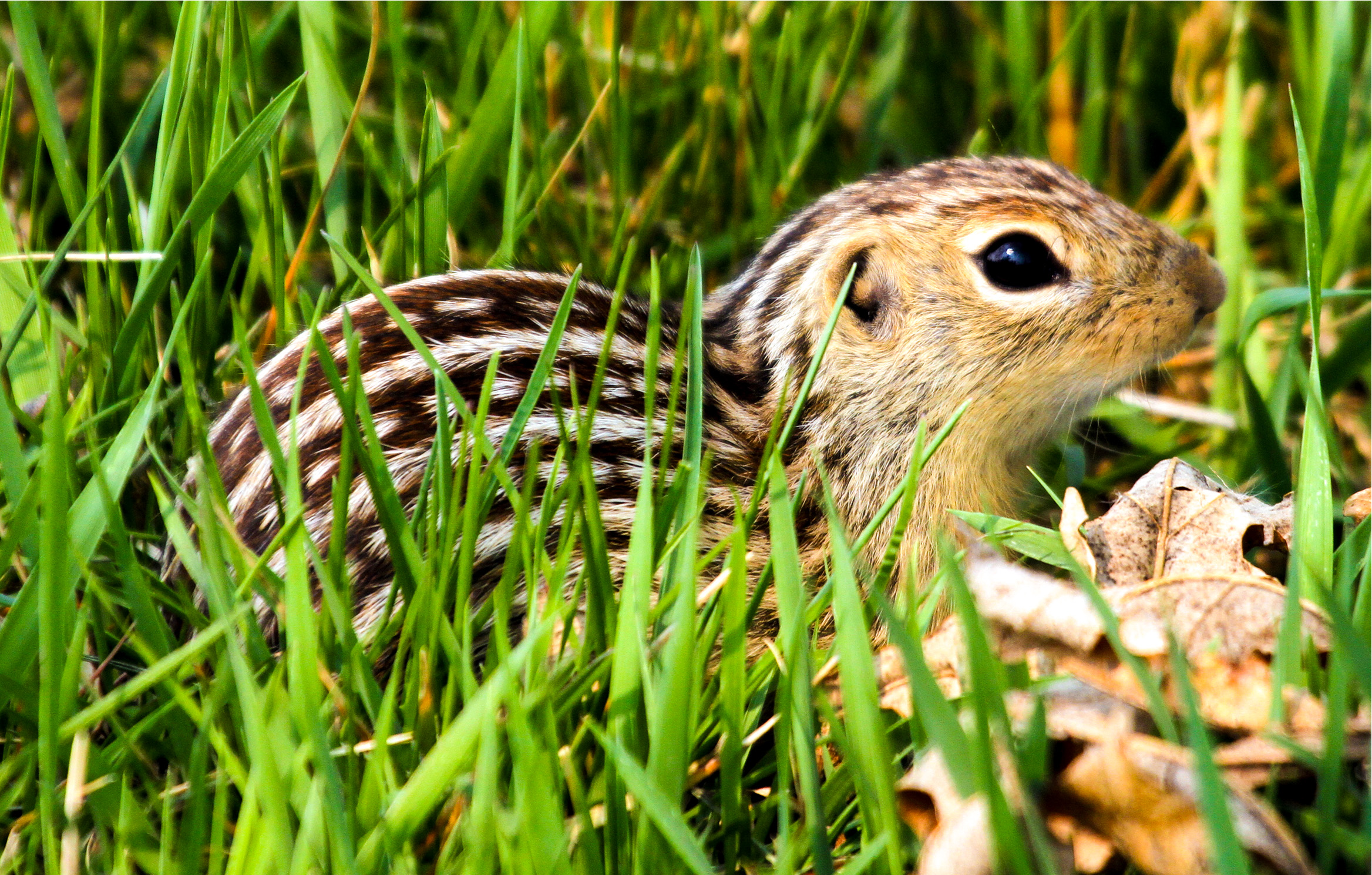
Elena Gracheva (left) has traced how the brains of 13-lined ground squirrels (right) suppress their thirst response during many months of hibernation.
Courtesy of Gracheva Lab (left); Greg Schechter CC-BY 2.0 via Wikimedia Commons
It isn’t that the squirrels don’t need water. They do. Their bodies cry out for it. But according to Gracheva’s research, during hibernation their brain ignores the body’s signals.
In mammals, a drop in blood water levels (which means a simultaneous rise in salt concentration, all things being equal) triggers two coupled processes. The hypothalamus pumps out the hormone vasopressin, which tells the kidneys to retain water rather than let it out as urine, and the SFO kicks off the thirst drive to direct the animal to drink. However, while ground squirrels are hibernating, their vasopressin levels jump, but the animal still doesn’t drink. “The circuit for vasopressin was normal, but thirst neurons were downregulated,” Gracheva said. “These two pathways are uncoupled.” The body is trying to retain the water it has but does not act to consume more.
The logic of the disrupted circuitry is extremely powerful. “Even if you wake them up in the middle of hibernation, they’re not going to drink,” Gracheva said.
The underlying network that Gracheva studies in squirrels is universal in mammals, up to and including humans. But that same neurological logic doesn’t lead to the same behaviors. Humans drink a glass of water when they’re thirsty. Cats and rabbits mostly get water from the food they eat. Camels can burn their fat stores for water (which produces carbon dioxide and water), but they also consume gallons of it and store it in their stomachs for when they need it later. Sea otters can drink ocean water and excrete urine that is saltier than the water they swim in; they are the only marine mammals to actively do this.
How each animal manages water and salt is specialized to its ecosystem, lifestyle and selective pressures. The question “What does it mean to be thirsty?” has no one answer. We each thirst in our own way.
